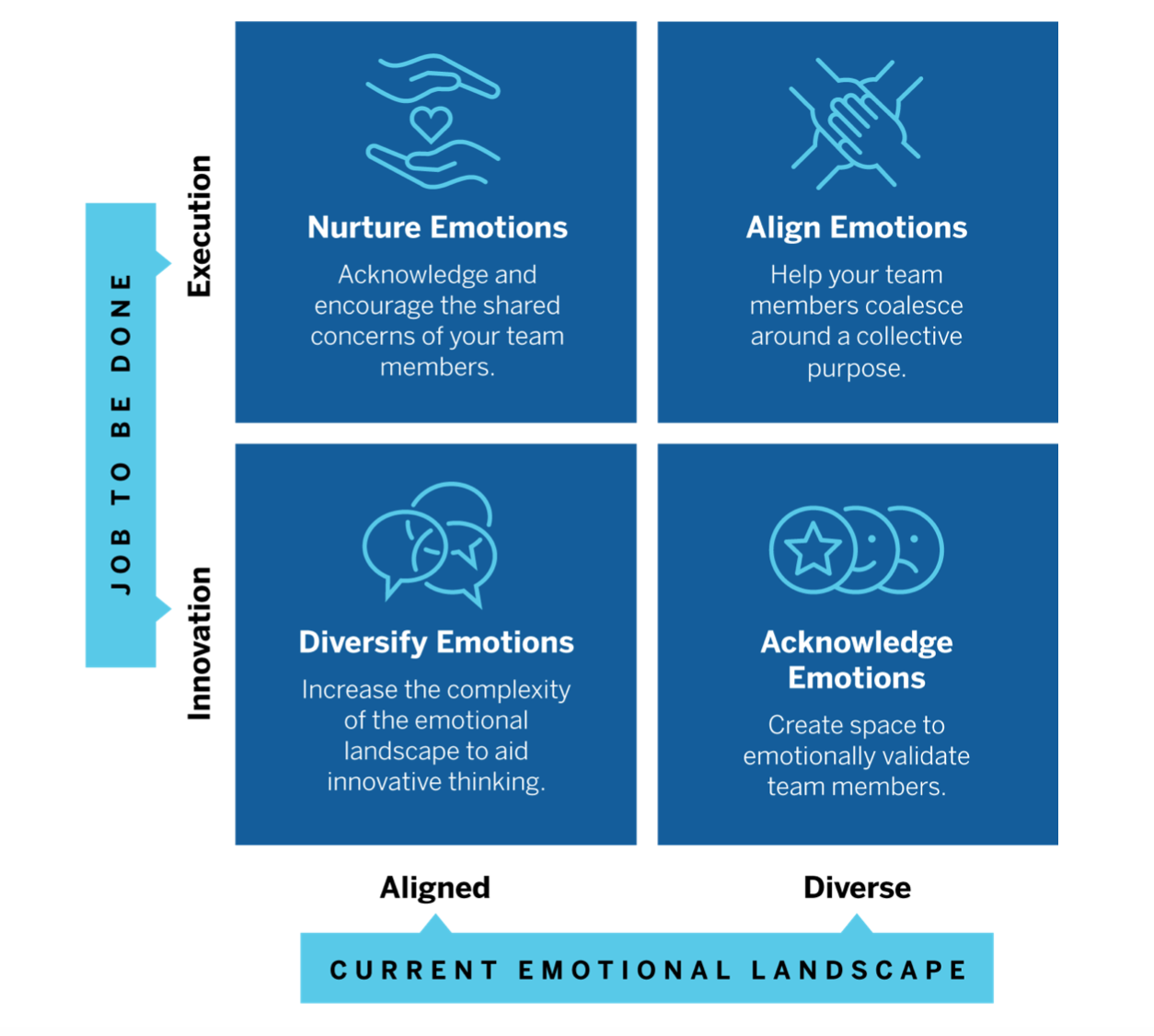Is Your Management Style Outdated?
The workplace is more complex than ever, but most managers rely on old, ineffective techniques to manage employee emotions.
Managing employees is harder than ever. Here’s a 4-step framework to respond with more nuance and precision to your team’s emotions – and increase productivity and performance as a result.
What’s happening?
Why it matters
The current state of employee wellbeing is grim, and managers’ lacking emotional management skills is a key factor driving that reality. There are 3 primary ways leaders traditionally respond to and try to influence employee emotions, mostly driven by a lack of comfort and expertise with emotions:
-
- Ignoring or suppressing them, and encouraging others to do the same
- Offering generic pep talks and fake optimism to lift the group’s mood
- Sounding the alarm bells to motivate with fear and anxiety
Each of these strategies can be effective in specific circumstances. The problem, much like with leaders’ traditional tools and methods for motivating employees, is when leaders try to use one type of motivator for all employees and all goals. Most leaders use these same, outdated emotional management responses for all employees and all situations – and that’s problematic.
The tendency to ignore or suppress emotions most likely comes from leaders’ discomfort with emotions. My hope is that this framework will help you feel more comfortable with the nuances of emotional situations, and more likely to apply the most effective solution for you and your team.
How to respond
Exceptional leaders utilize emotional intelligence to personalize their emotion management approach based on the situation at hand. A recent article in MITSloan Management Review, How Leaders Can Optimize Team’s Emotional Landscapes, offers an interesting framework for navigating team’s emotional climates.
The researchers advice to start with 2 questions:
- What is the nature of the primary job to be done at the moment? Is the team’s current primary objective to execute upon a clear strategy that has already been mapped out in advance? Or, instead, do you need the team to innovate, to brainstorm, and to develop new solutions to a pressing problem?
- What is the current emotional landscape of your team? Are the emotions among members relatively aligned, or are they diverse?
They start with these questions because different tasks call for different emotional states. When a team’s current task is to execute upon a clear strategy, emotional alignment is beneficial. That’s when some typical management strategies work well: like rallying a team with a pep talk or motivating with real talk about the costs of failure.
On the other hand, when a team’s current task is to brainstorm, problem solve, or innovate, emotional diversity is beneficial. In this context, emotional diversity means allowing a range of emotional states to exist, without trying to coalesce the ground around a single feeling.
This chart shows 4 emotional management strategies – nurture, align, diversify and acknowledge – based on the task at hand and the current emotional climate:

Source: MITSloan Management Review, How Leaders Can Optimize Team’s Emotional Landscapes
Whichever strategy is most appropriate for your situation, the learnable, measurable skills of emotional intelligence will be invaluable. Emotional intelligence is being smarter with feelings. Just like you don’t use the same math equation to solve different problems, you won’t use the same emotional equation or strategy for every situation. It starts with self-awareness, or clearly seeing your own and others’ emotions. Then you have to make an intentional choice on what you want to happen, aligned with your vision and mission.
That’s the Six Seconds Model of Emotional Intelligence in action – and it’s powerful.
You may also like…
- Emotional Intelligence at Work: The Free, Easy Win Most Managers Are Missing - June 18, 2024
- Krish and Anabel: SEL Pioneer and Mentee Share 6 Life Lessons on Empathy, Integrity, and Emotional Intelligence - June 3, 2024
- Emotional Intelligence at Work: Is There Hope for Toxic Workplaces? - May 14, 2024
